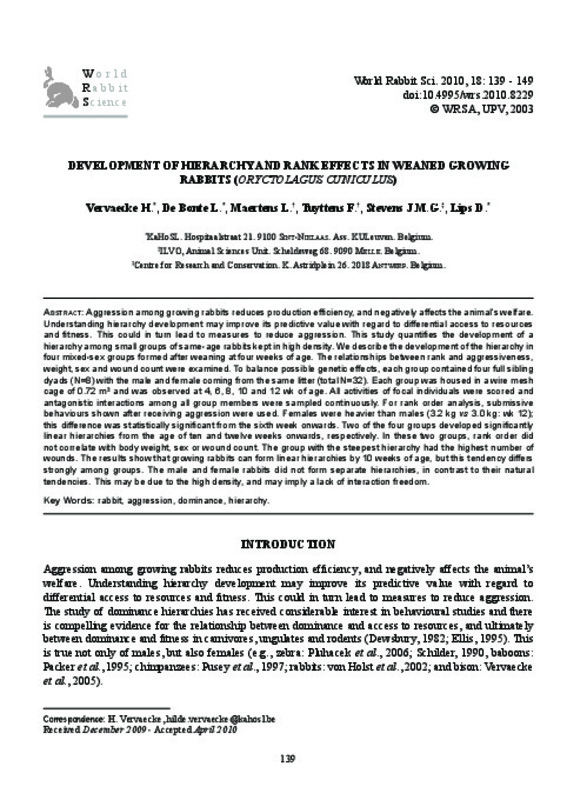JavaScript is disabled for your browser. Some features of this site may not work without it.
Buscar en RiuNet
Listar
Mi cuenta
Estadísticas
Ayuda RiuNet
Admin. UPV
Development of hierarchy and rank effects in weaned growing rabbits (oryctolagus cuniculus)
Mostrar el registro completo del ítem
Vervaecke, H.; De Bonte, L.; Maertens, L.; Tuyttens, F.; Stevens, J.; Lips, D. (2010). Development of hierarchy and rank effects in weaned growing rabbits (oryctolagus cuniculus). World Rabbit Science. 18(3). https://doi.org/10.4995/wrs.2010.8229
Por favor, use este identificador para citar o enlazar este ítem: http://hdl.handle.net/10251/8945
Ficheros en el ítem
Metadatos del ítem
| Título: | Development of hierarchy and rank effects in weaned growing rabbits (oryctolagus cuniculus) | |
| Autor: | Vervaecke, H. De Bonte, L. Maertens, L. Tuyttens, F. Stevens, J.M.G. Lips, D. | |
| Fecha difusión: |
|
|
| Resumen: |
[EN] Aggression among growing rabbits reduces production efficiency, and negatively affects the animal s welfare. Understanding hierarchy development may improve its predictive value with regard to differential access to ...[+]
|
|
| Palabras clave: |
|
|
| Derechos de uso: | Reserva de todos los derechos | |
| Fuente: |
|
|
| DOI: |
|
|
| Editorial: |
|
|
| Versión del editor: | https://doi.org/10.4995/wrs.2010.8229 | |
| Tipo: |
|








